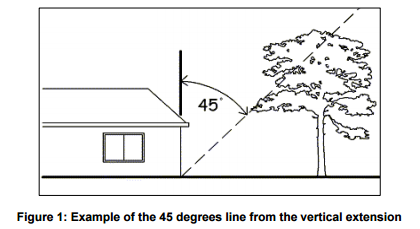Calculating risk of fatality from falling tree
Gum trees (like the trees in question hanging over our house) are often referred to as the widowmakers, due to their trait of dropping branches unpredictably and without notice (read more on this here).
This post in particular, however, discusses a scientific peer-reviewed paper with a proposed method of calculating the risk of injury, and risk of death from falling trees. Namely, "Review of QTRA and Risk-based Cost-benefit Assessment of Tree Management" (Arboriculture & Urban Forestry 2013. 39(4): 165–172).
The paper discusses the following formula:
This post in particular, however, discusses a scientific peer-reviewed paper with a proposed method of calculating the risk of injury, and risk of death from falling trees. Namely, "Review of QTRA and Risk-based Cost-benefit Assessment of Tree Management" (Arboriculture & Urban Forestry 2013. 39(4): 165–172).
The paper discusses the following formula:
Risk of harm = Probability of failure × Target value × Impact potential
- harm is defined as serious injury or death
- probability of failure is the annual probability that a tree or selected tree part will fail
- the target value is the probability that a person, a vehicle, or the property will be impacted;
- the impact potential is the probability of harm a falling tree, or part of a tree, can cause to a pedestrian or vehicle.
So, plugging in some numbers for the trees directly above our house:
- Probability of failure = 0.01 (i.e. 1% chance that some part of the tree may fall in one year)
- This is frankly a very conservative estimate, since the tree has dropped heavy branches that broke our roof and flooded our place just a few years ago.
- target value = 0.5 (i.e. 50% chance the falling part will fall on me or my house)
- Roughly 50% of the tree canopy is above the house.
- impact potential = 0.5 (i.e. 50% chance the impact will harm the property or someone when it falls on it)
- This should really be 100%, but putting here 50% to be conservative.
Risk of harm = 0.01 * 0.5 * 0.5 = 0.0025 (i.e. 1 in 400)
The paper further claims:
The risk is deemed “unacceptable” if the ROH exceeds 1 in 10,000.
Now in our situation, 1 in 400 greatly exceeds that!
The paper also gives a formula for calculating the risk of fatality:
E = N * RoH * T (Number of trees * Risk of Harm * Time in years)
So in a 1 year period, we have a 0.25% chance of dying, and in 10 years, a 2.5% chance.
Yet the council says we can only prune up to 10% maximum of the canopy, reducing risk of dying to 2.25%... great, thanks.
The council though thinks it's acceptable, because "the tree is healthy", which ignores all the identified precedent of the two Gum species identified dropping branches without any warning.


Comments
Post a Comment